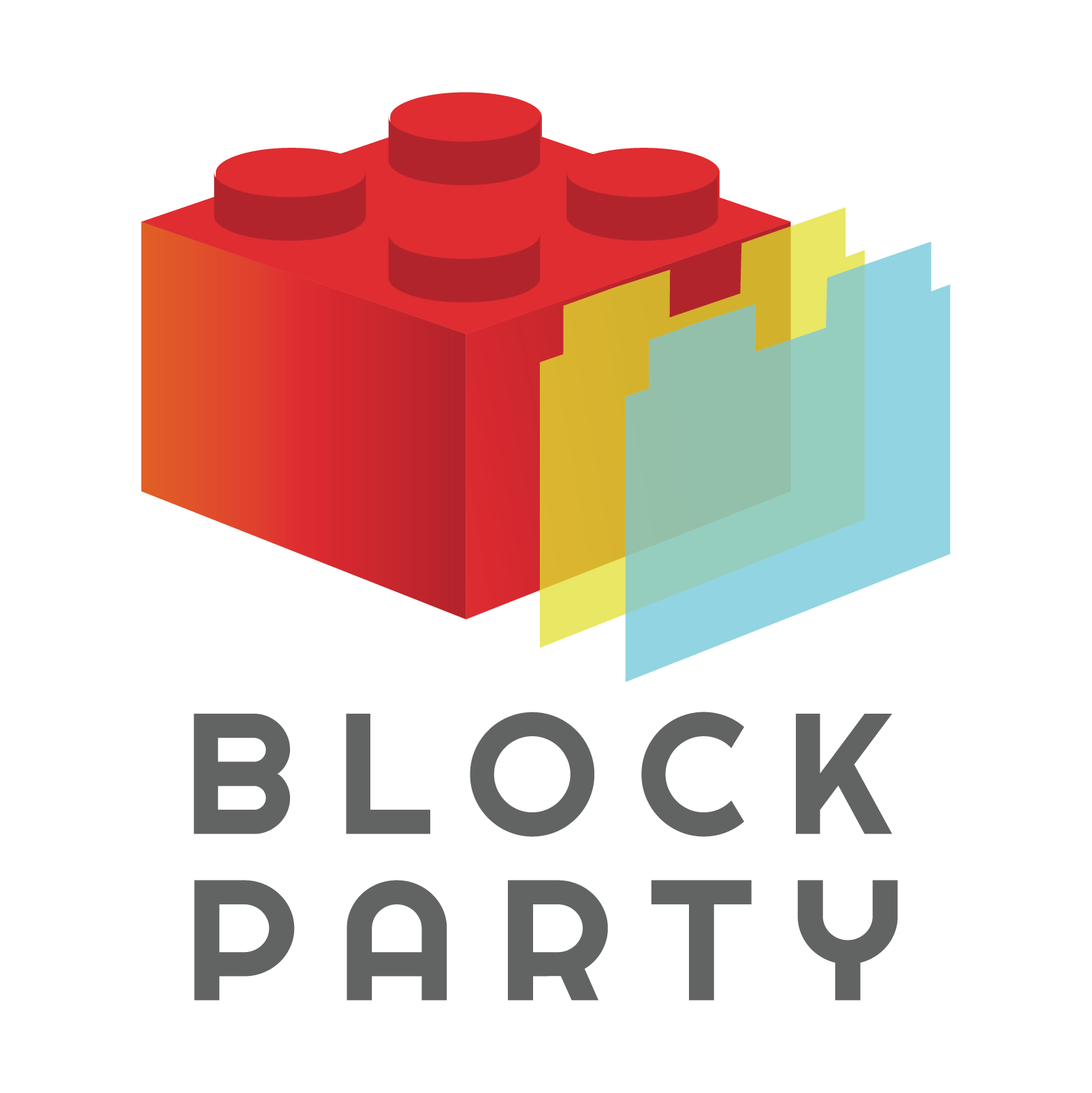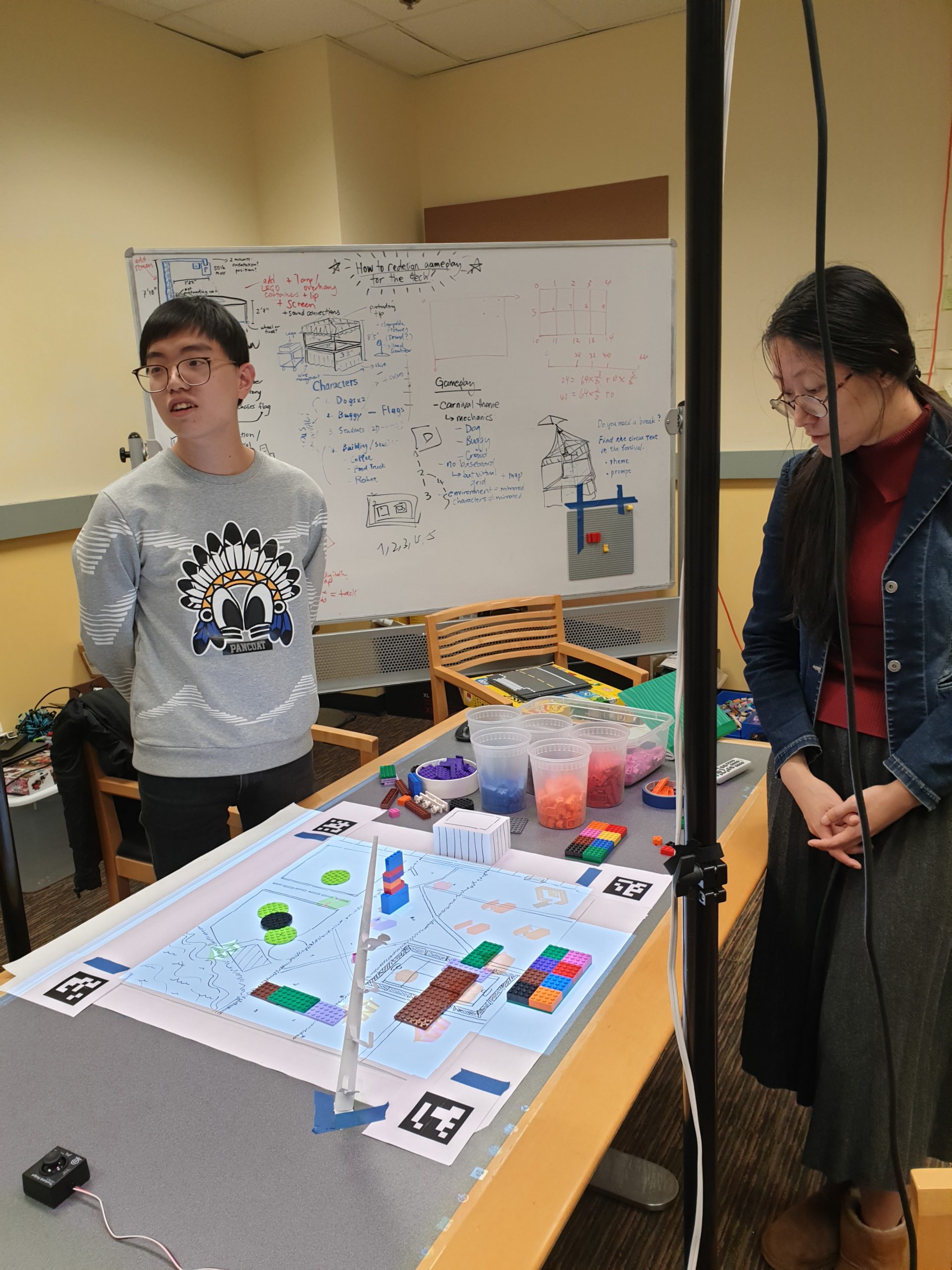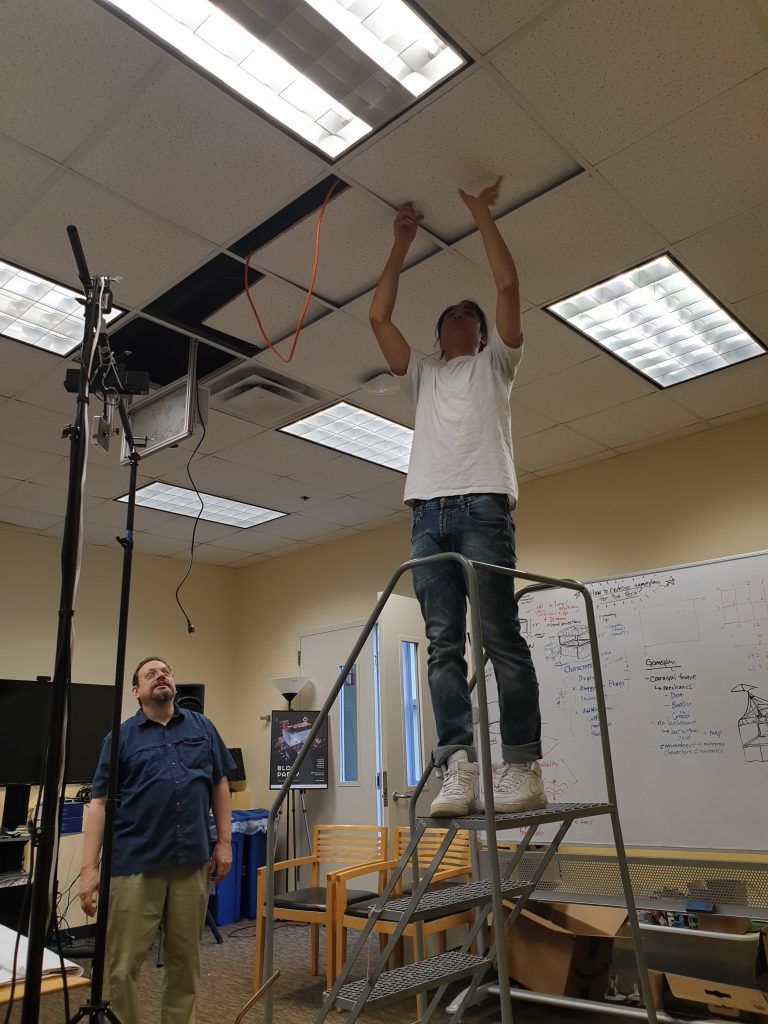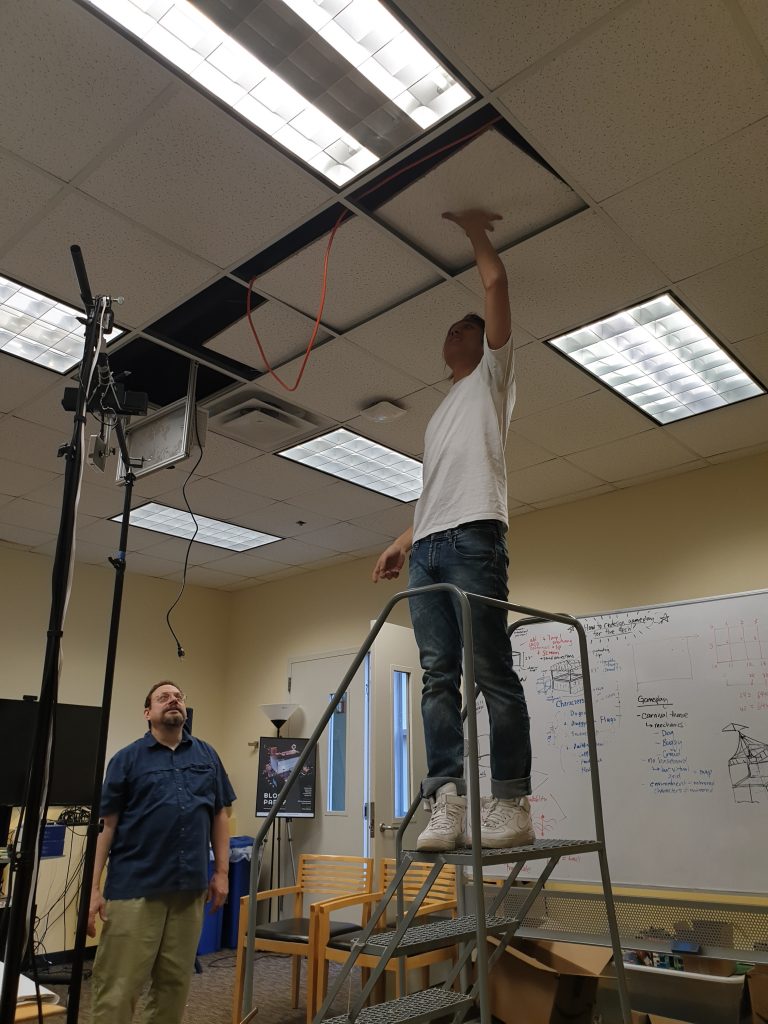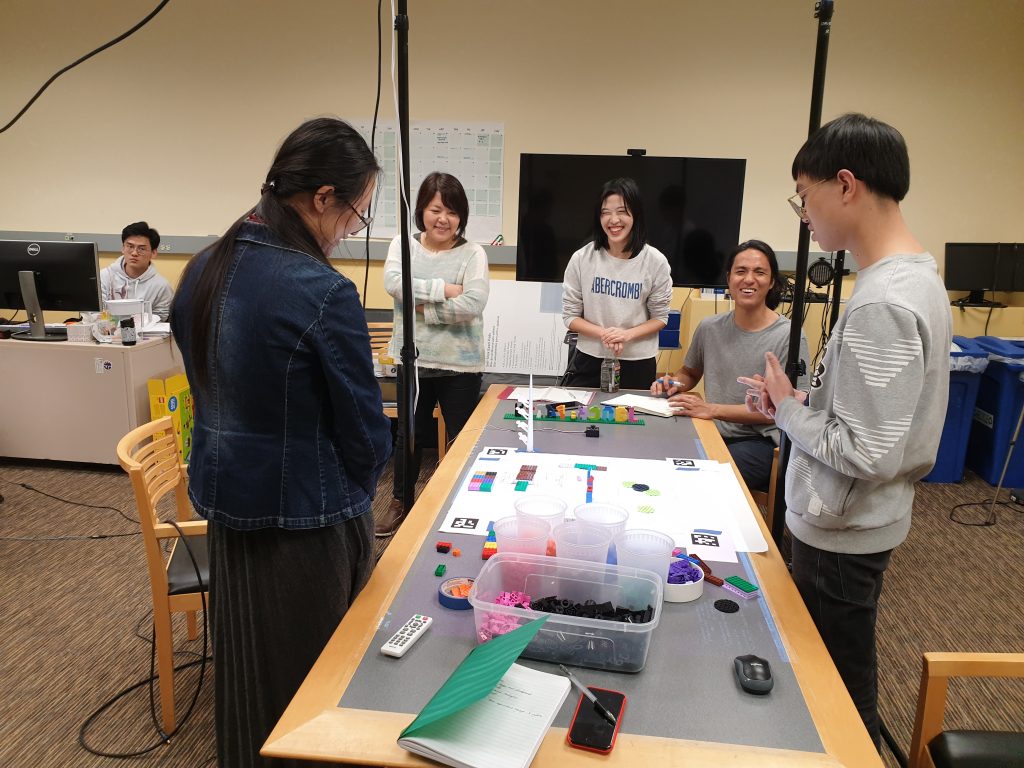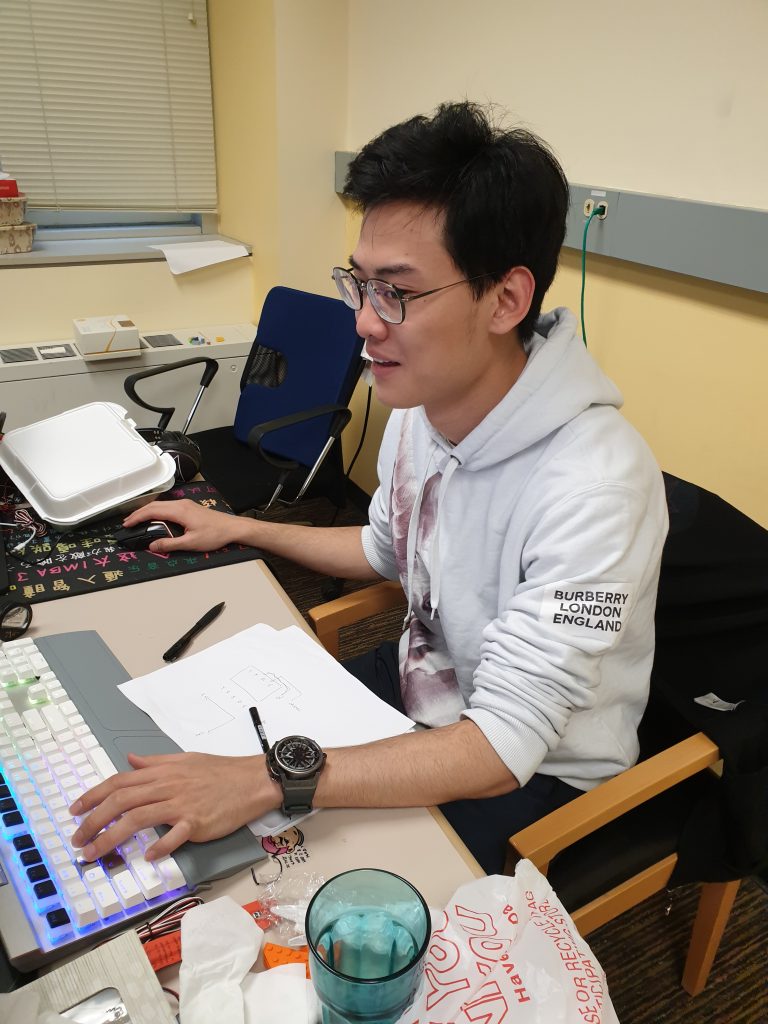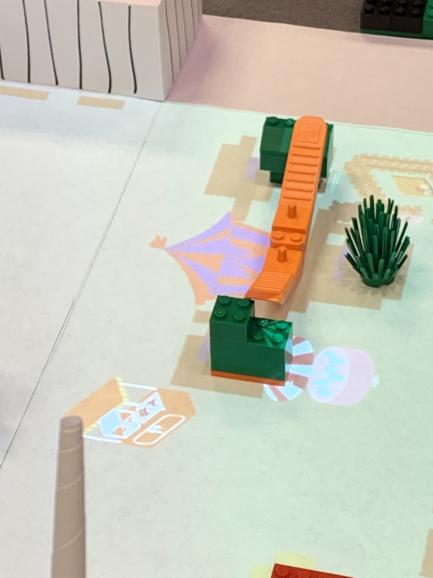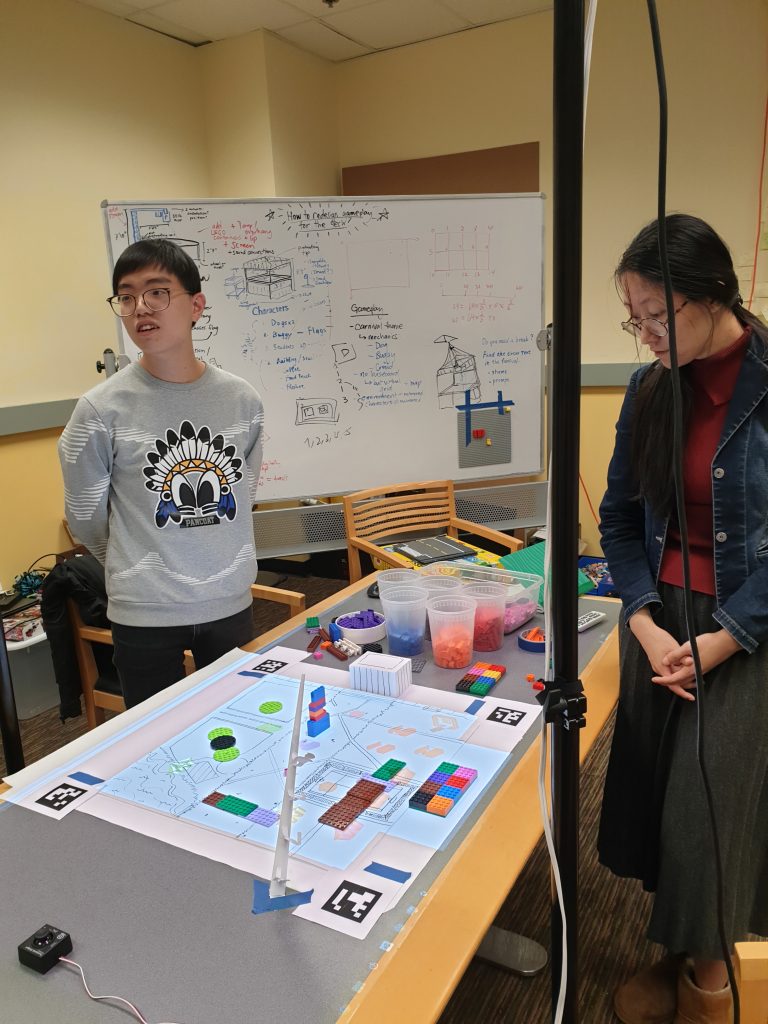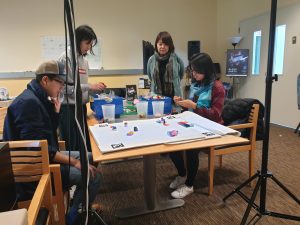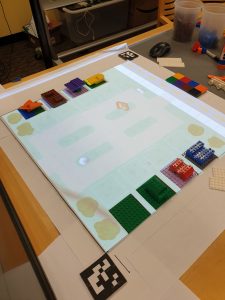This week we broke down our vision for the next three weeks (before Softs) into sprintable chunks of development. Our current gameplay iteration involves no LEGO baseboard (a flat interactive surface) and will include three characters on the virtual map: one dog (Scotty), a stream of students, and the occasional buggies zooming across the map. LEGO objects that players build and place on the table surface will generate a carnival tent or attraction (for now, a tent) and will include the core colors of that LEGO object reflected in the color scheme of that tent.
We got a new projector with 36 times the luminosity of our miniature projector, and tested this new brightness and larger surface area with respect to our art assets for readability. Here’s some pictures of Kevin and Dave setting it up at the expected height!
Speaking of expected height…we finally have a mockup of what the table will look like! Our client mentioned to us during Playtest Day that we might be setting up our installation at Sorrells Library instead of Hunt Library. Some of the team had strong opinions about the location and pushed for keeping it at Hunt, so the client had us create a proposal that they could then get their higher-ups to approve, since Hunt is a very high-traffic area. To communicate clearly and properly make our case, we created a 3D model of what the table would look like.
Tech Progress
Our programmers have fixed the memory leak issue and successfully moved the depth correction to the GPU. It now runs perfectly without any issues! Yay!
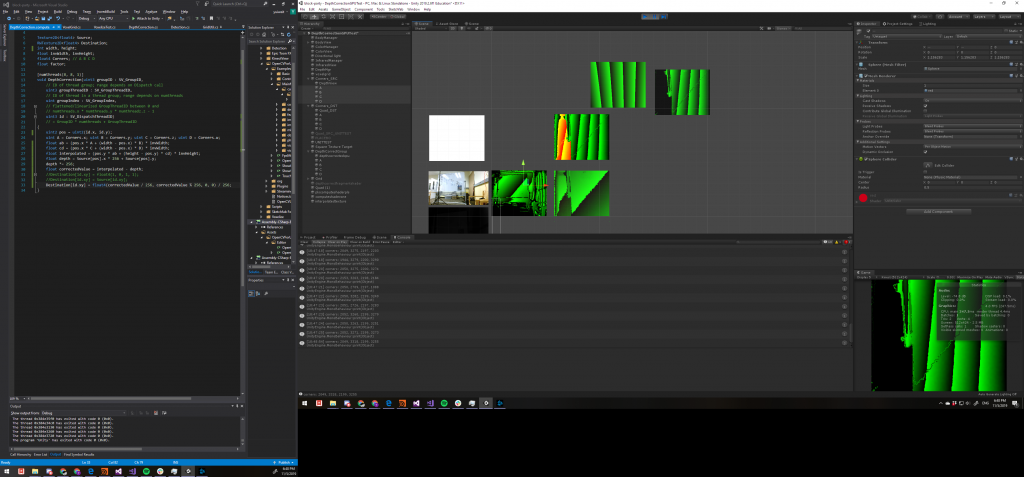
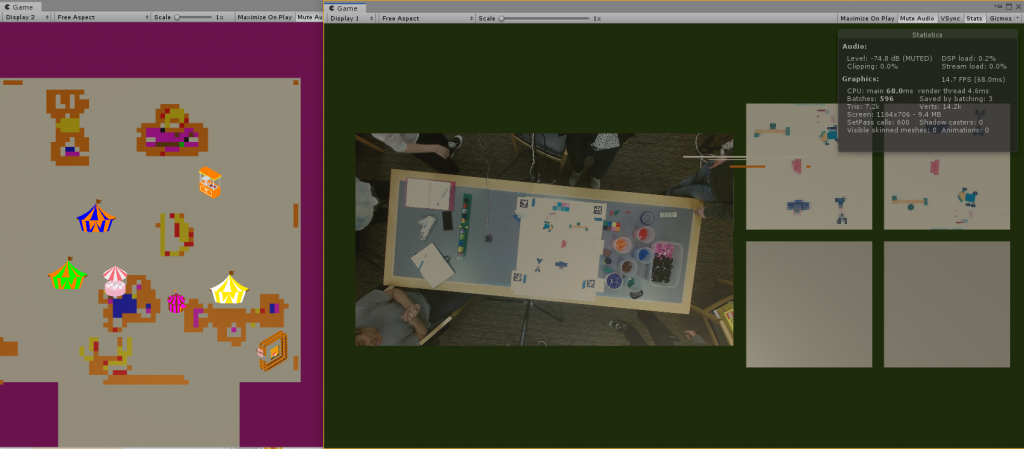
We’ve moved on now finally to getting proper object detection up, so that we can spawn objects without a Wizard of Oz sitting behind a screen. However, because we still have to playtest our current game design for this week and object detection is still in progress, we still have resident Wizard Jimmy – pictured, looking stressed as he is clicking to spawn items where they should when players put down blocks.
Playtest Feedback
This intensive playtesting of our current build at the end of the week allowed us to get quick feedback on what we should stick with and drop. The dog character that we playtested (other characters will be integrated later in the sprint schedule) this time only reacted to the generated stalls and attractions instead of constantly moving around the map, and we implemented emoji-based UI for the dog’s emotional state (just a smiley face). The dog would enter the tents and fireworks would explode from the tent it just entered, and the dog would leave happy.
We found that the emoji’s are effective visual indicators for consequences in the virtual world, which are important to show clearly for players. This leads to self-created goals like “let’s get the dog to this tent” and the discovery element worked like a collaborative puzzle to figure out the ‘rules’ connecting the dog, tents, and the size of LEGO you build. The height and color connection are less obvious, and we definitely want to create a range of generated objects to reflect the size difference of what players build.
We also found that creating our own custom map really helped the style of play without any LEGO baseboards as it told players where to place items and hinted that they should build something and place it on the grass, for example, compared to simply scattering blocks across the play area. Placing physical features of CMU, such as Walking To The Sky and the Fence also really helped convey the setting to the players as they now knew they were building some structures in CMU.
We also are creating a custom table with a local fabricator, and it will look like a themed tent reflective of our CMU carnival story. This will also help to control the light in the area and hide some of our technological pieces in a streamline and aesthetically pleasing way.
